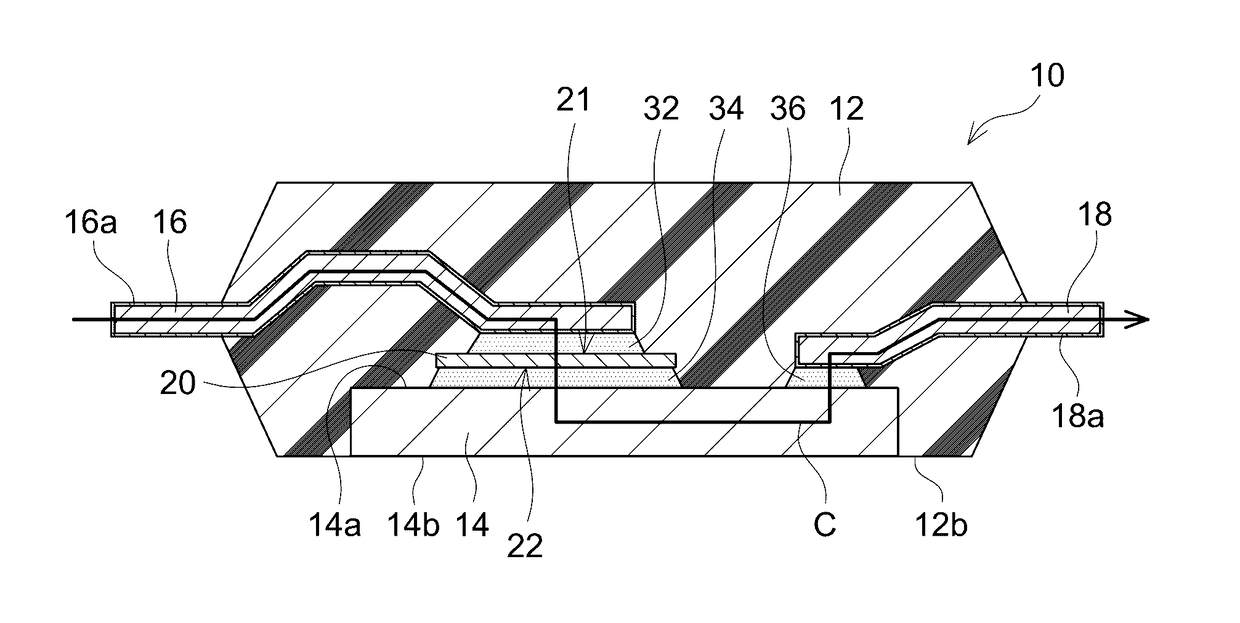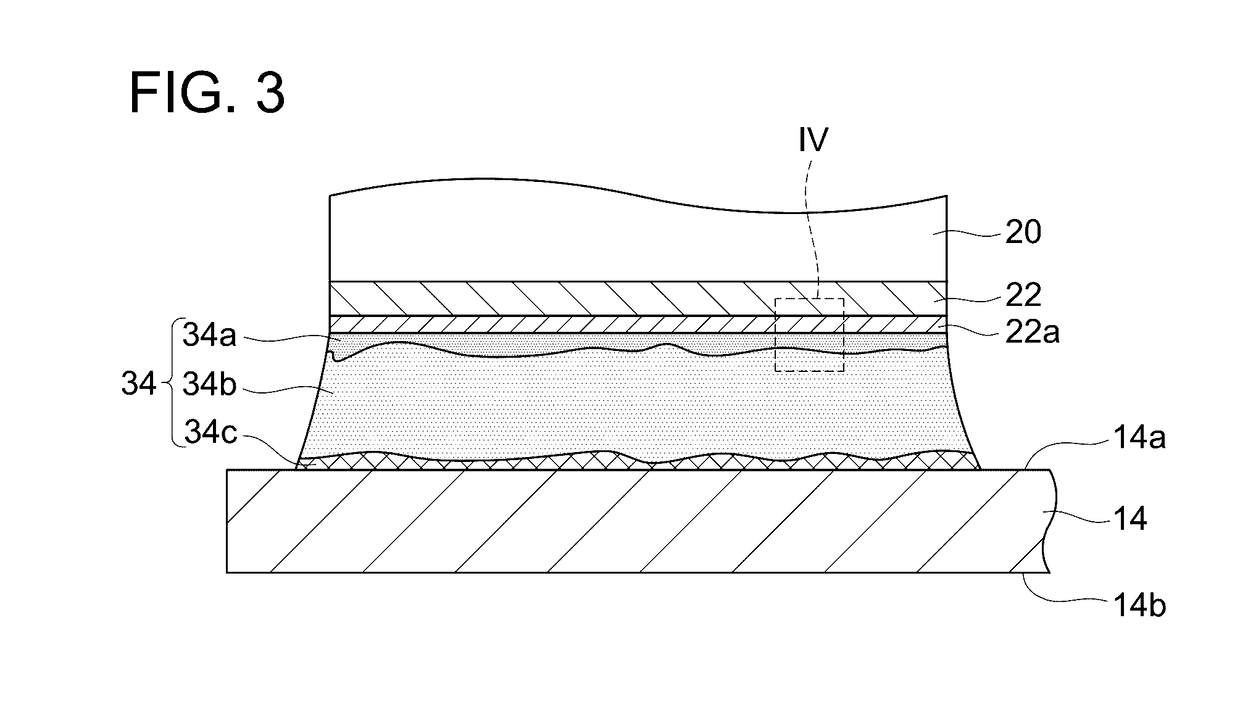Semiconductor device
a technology of semiconductor devices and semiconductors, applied in semiconductor devices, semiconductor/solid-state device details, electrical apparatus, etc., can solve the problems and achieve the effect of increasing electrical resistance and reducing joint strength
- Summary
- Abstract
- Description
- Claims
- Application Information
AI Technical Summary
Benefits of technology
Problems solved by technology
Method used
Image
Examples
embodiment 1
[0026]With reference to the drawings, a semiconductor device 10 in Embodiment 1 will be described. As shown in FIGS, 1 and 2, the semiconductor device 10 includes a semiconductor element 20, and a seal body 12 that seals the semiconductor element 20 therein. The seal body 12 is made of insulating material. The seal body 12 in the present embodiment is the one made of resin material and formed by molding. Notably, the seal body 12 may be made of various sealing materials (or molding materials) such as sealing material for a power semiconductor element can be adopted as appropriate.
[0027]The semiconductor element 20 includes a first electrode 21 and a second electrode 22. The first electrode 21 is located on an upper surface of the semiconductor element 20, and the second electrode 22 is located on a lower surface of the semiconductor element 20. The semiconductor element 20 includes a diode, the first electrode 21 is an anode electrode of the diode, and the second electrode 22 is a c...
embodiment 2
[0041]A semiconductor device 50 in Embodiment 2 will be described. As shown in FIGS. 8 to 12, the semiconductor device 50 includes a plurality of semiconductor elements 70, 80, 90, and 100, and a seal body 52 that seals the plurality of semiconductor elements 70, 80, 90, and 100 therein. Moreover, the semiconductor device 50 includes a plurality of heat sinks 62, 64, 66, and 68, and a plurality of spacers 74, 84, 94, and 104. The plurality of heat sinks 62, 64, 66, and 68 include a first heat sink 62, a second heat sink 64, a third heat sink 66, and a fourth heat sink 68. Each of the heat sinks 62, 64, 66, and 68 and each of the spacers 74, 84, 94, and 104 are electrically conductive members, and are formed of copper in the present embodiment. As mentioned below, each of the heat sinks 62, 64, 66, and 68 and each of the spacers 74, 84, 94, and 104 are electrically connected to one or the plurality of semiconductor elements 70, 80, 90, and 100, and configure an electrically conductiv...
PUM
 Login to View More
Login to View More Abstract
Description
Claims
Application Information
 Login to View More
Login to View More - R&D
- Intellectual Property
- Life Sciences
- Materials
- Tech Scout
- Unparalleled Data Quality
- Higher Quality Content
- 60% Fewer Hallucinations
Browse by: Latest US Patents, China's latest patents, Technical Efficacy Thesaurus, Application Domain, Technology Topic, Popular Technical Reports.
© 2025 PatSnap. All rights reserved.Legal|Privacy policy|Modern Slavery Act Transparency Statement|Sitemap|About US| Contact US: help@patsnap.com



